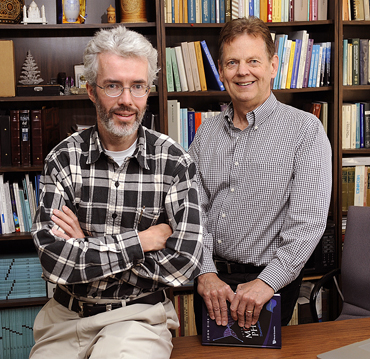Iowa State University physicists, left to right, Pieter Maris and James Vary have used supercomputing power to solve the puzzle of the long, slow decay of carbon-14. That long half-life makes carbon-14 a useful tool to determine the ages of skeletons and other artifacts. Photo by Bob Elbert.


